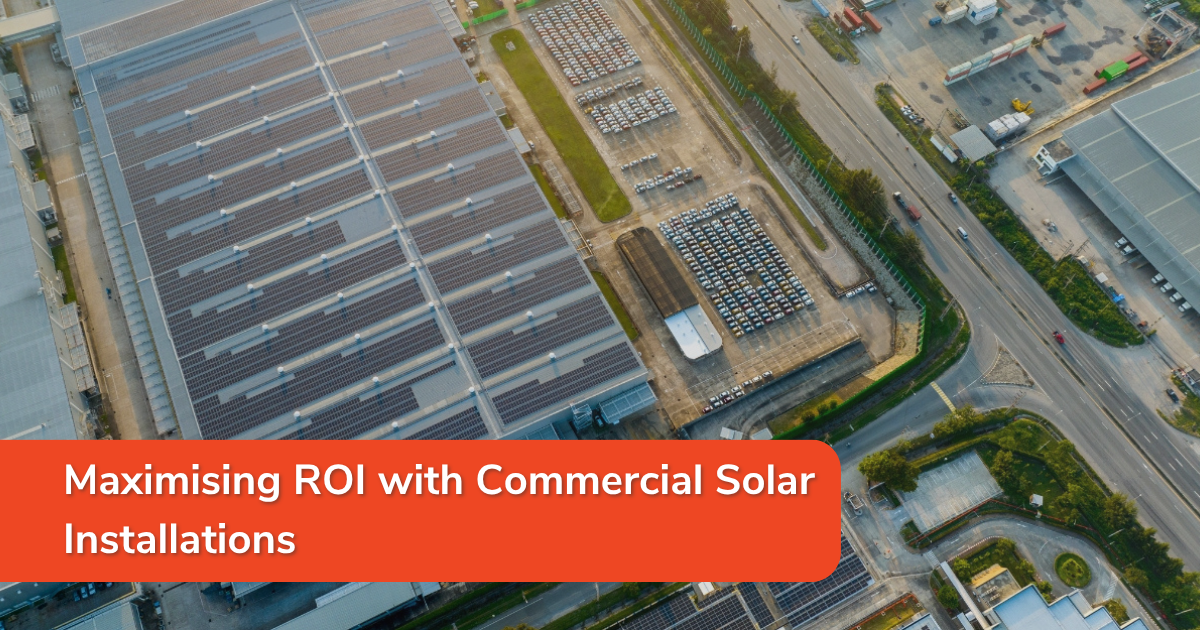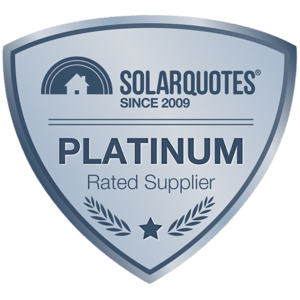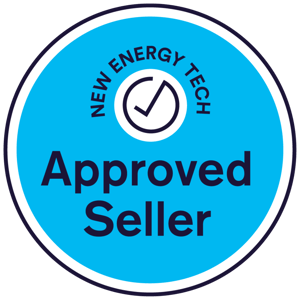Maximising ROI with Commercial Solar Installations

With electricity prices continuing to rise and sustainability targets becoming standard across industries, more businesses are turning to solar as a long-term investment. But going solar isn’t just about reducing carbon emissions — it’s about generating real, measurable returns.
Whether you’re operating a retail chain, warehouse, school, farm, or manufacturing plant, a well-designed solar system — especially when paired with a solar battery rebate — can deliver substantial ROI in just a few short years.
In this guide, we’ll break down how to calculate return on investment from commercial solar and what steps to take to maximise value — from choosing the right components like Aiko solar panels and the Sigenergy battery, to accessing rebates and VPP revenue streams.
Why ROI Matters in Commercial Solar
For businesses, solar energy is a capital investment that must be justified with hard numbers. Calculating ROI helps you:
- Understand how quickly your investment pays off
- Forecast total lifetime energy savings
- Position solar as both a sustainability and financial asset
Many businesses are pleasantly surprised to find that solar isn’t just environmentally sound — it’s one of the most financially strategic moves they can make today
1. Key Factors That Influence Solar ROI
Here are the major variables that determine how fast and how much your solar installation will return:
Energy Usage and System Sizing
A right-sized system ensures maximum self-consumption and minimal waste. Oversizing can reduce ROI, while undersizing limits your savings.
Electricity Tariffs
If your business is paying premium daytime rates, solar can dramatically offset those costs — especially in industries with high machinery or HVAC usage.
Installation Costs & Rebates
Federal incentives such as the solar battery rebate (and solar battery rebate NSW, where applicable) significantly reduce upfront expenses. This makes it easier for businesses to see returns within 3–5 years.
VPP Programs
Selling excess stored energy through Virtual Power Plant (VPP) participation is an additional income stream. Devices like the Tesla Powerwall 3 (Australia) and the Sigenergy battery are VPP-compatible, allowing commercial systems to become revenue-generating assets.
Large-Scale Generation Certificates (LGCs)
For systems over 100 kW, businesses can earn LGCs for every megawatt-hour (MWh) of renewable electricity generated. These certificates can be sold on the open market — providing an ongoing financial incentive and boosting ROI. Unlike STCs (typically for residential/small commercial), LGCs create long-term revenue potential for larger commercial operations.
2. How to Calculate ROI on Commercial Solar
Here’s a simplified formula to estimate your ROI:
ROI (%) = (Total Savings Over Time – Initial Investment) / Initial Investment x 100
For example:
- Upfront system cost: $100,000
- Estimated federal/state rebates: $25,000
- Net investment: $75,000
- Annual savings: $25,000
Year 1 ROI = (25,000 / 75,000) x 100 = 33.3%
At this pace, the system pays for itself in 3 years, with 20+ years of savings ahead.
3. Tips to Maximise Solar ROI
Invest in High-Performance Panels
Modern Aiko solar panels are engineered for ultra-high efficiency, even in low-light conditions — helping you squeeze more power and value from your roof space.
Use Smart Batteries
Products like the Sigenergy battery offer modular scalability, smart thermal protection, and seamless VPP integration — ideal for commercial environments where performance and safety are non-negotiable.
Access All Eligible Rebates
If your business is located in New South Wales, the solar battery rebate NSW can cut a significant chunk from your initial investment. All commercial sites nationwide can also access federal rebates and STCs to reduce costs.
Add Monitoring & Maintenance Plans
Real-time energy monitoring ensures peak performance, while proactive maintenance protects your long-term ROI.
4. Sample ROI Table for Different Businesses
|
Business Type |
System Size |
Total Cost (Post-Rebate) |
Annual Savings |
Payback Period |
| Retail Franchise50 kW | 50 kW | $60,000 | $15,000 | 4 years |
| Manufacturing Plant | 100 kW | $120,000 | $30,000 | 4 years |
| Agriculture Facility | 80 kW | $90,000 | $22,000 | 4.1 years |
After the payback period, these systems continue to produce clean energy and savings for 15–20 more years — all while reducing your carbon footprint.
Conclusion
Commercial solar is no longer just a sustainability measure — it’s a smart financial strategy. With careful planning, the right technology, and access to rebates, your solar system can deliver fast, consistent, and long-term returns.
Here’s how to maximise your commercial solar investment:
- Choose proven components like Aiko solar panels and Sigenergy batteries
- Leverage all available rebates, including the solar battery rebate NSW for VPP
- Participate in VPPs using smart batteries like the Tesla Powerwall 3 Australia or Sigenergy
- Work with a trusted installer to ensure precision design and future-proof scalability
Ready to calculate ROI for your site?
Talk to our commercial solar specialists today for a tailored assessment and rebate guidance.
%20(1).png?width=265&height=96&name=www.smartenergyanswers.com.auhs-fshubfsSmart%20Energy%20Answers%20Logo%20(HIRES)%20(1).png)

.png?width=514&height=121&name=Tesla%20Powerwall%203%20(new).png)








.webp?width=300&height=180&name=sigenergy-gold-installer-300x180%20(1).webp)